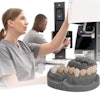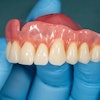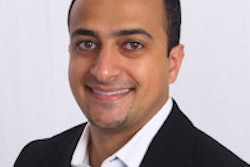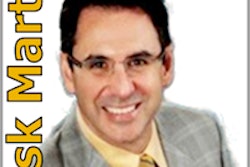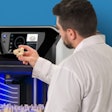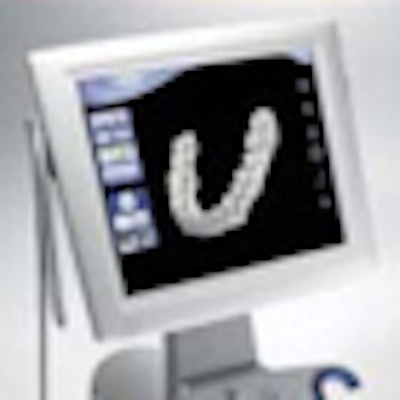
Enthusiasm for chairside intraoral scanning as a more precise, productive, and patient-friendly option to traditional impressions was high when the first commercial products hit the market a few years ago.
In 2008, the U.S. market for digital impression systems in dentistry increased by 73% over 2007, driven in part by new technologies coming onto the market in 2006, according to iData Research. And although iData expects the U.S. market for digital impression systems to reach $83.5 million by 2015, adoption has so far been slower than expected.
— Bob Steingart, president, SensAble
Technologies
"About 11% of U.S. dentists own chairside CAD/CAM systems, while about 2% have digital impressioning," Michael Augins, president of Sirona Dental Systems, told DrBicuspid.com. "We think that 10 years from now the majority of dentists will have digital CAD/CAM capabilities in their offices, whether chairside or lab-based impressioning."
But so far widespread adoption has been stymied by a combination of economics and a general resistance to change among many dental professionals.
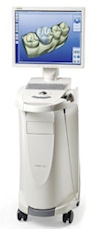 The Cerec AC. Image courtesy of Sirona Dental Systems.
The Cerec AC. Image courtesy of Sirona Dental Systems."Digital impressioning has been around for a few years, but in analyzing the market we found the biggest barrier to adoption was price and the lack of a clear value proposition," Augins said.
A digital impression system such as the Cerec AC from Sirona, Lava C.O.S. from 3M ESPE, or Cadent iTero (marketed as part of the Straumann CAD/CAM system) typically costs around $30,000. Plus there are the related scan and model fees, both around $25 per case.
"When a dentist does a traditional impression, it might cost them $5 to $10, and there is no capital equipment investment needed," said Bob Steingart, president of SensAble Technologies. "But imagine you go to that dentist and say 'I want you to spend $25,000 for an impression scanner, and I'm going to charge you $25 for an impression on top of that.' I think some of the technology guys forgot about the economic side of this early on. The technology is improving to a point where it is working well for certain types of indications, but the economics have to work as well."
Cost-benefit analysis
The three leading vendors of this technology -- Sirona, 3M ESPE, and Straumann -- showcased their digital impression systems and services at this year's ADA meeting in Orlando, FL, in an effort to help potential customers better understand the value propositions their products offer.
Sirona, for example, is running a new promotion as part of the upcoming 25th anniversary of the Cerec.
The Cerec AC Connect is a slightly different machine than the Cerec AC," explained Roddy MacLeod, vice president of CAD/CAM at Sirona. "The Cerec AC Connect is a specially designed unit we made specifically for digital impressioning in celebration of Cerec’s 25th anniversary. For that reason we limited production to 250 units."
The Cerec AC Connect is only for digital impressions; no CAD software is included for designing restorations and milling, he added. And while the Cerec AC retails for $53,995, the Cerec AC Connect retails for $25,995. In addition, there are no associated scan fees for the lifetime of these 250 Cerec AC Connect systems.
 The Lava C.O.S. Image courtesy of 3M ESPE.
The Lava C.O.S. Image courtesy of 3M ESPE."What we decided to do was have customers pay one low price up front, then every time they use the system, there is no longer a scan fee," Augins said. "Impression materials cost $20 to $25 per case, and companies like 3M are charging $25 every time you use their Lava C.O.S. device. So you can never really generate a practical return. But the Cerec AC combines the precision and productivity advantages of digital impressioning with the largest network of labs that use it, so we have a better economic proposition."
Despite continuing to charge the $25 per case fee, 3M ESPE says it has numerous customer testimonials about the ability of digital impressioning to "de-stress" the entire dental office and restoration process and improve productivity in the process.
"We position this as 'you don't have to be your lab,' but our big push right now is reduced stress and improved productivity," said Amber Armbruster, marketing communications administrator at 3M ESPE. "After using this system, we have testimonials from doctors about how much stress is reduced throughout the office, from patient scheduling not being disrupted to the doctor having faith that the restoration will fit without adjustments."
In addition, 3M ESPE has found that seating time of a single-unit crown can be reduced by 43% using this technology. "The fit is so key," she said.
Targeting specialties
Straumann is taking a slightly different approach to the digital impression market by emphasizing the ability of its system to enhance implant cases and thus create a more attractive value proposition for specialists and dental labs, as well as general practitioners.
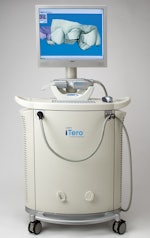 The iTero. Image courtesy of Cadent.
The iTero. Image courtesy of Cadent."A periodontal or implant specialist can use intraoral scanning to facilitate rapid manufacture of the dental prosthesis," said Martin Dymek, CEO of Straumann USA. "The surgeon can scan the implant site using scan body abutment using the iTero scanner, scan the site, and then that digital information can be migrated into the Straumann 6.0 software, and the lab can begin to create custom abutment. This serves as a practice building tool for the surgeon, and makes getting involved in implant dentistry much easier for the general practitioner."
It also creates a new potential customer base for the dental lab, he added.
"Previously, the labs haven't had much cause to engage with perio and implant specialists," Dymek said. "But now the surgeon and the lab can work together on surgical stents using the Straumann guided-surgery platform and treatment planning software. And this is something the lab can now offer that they can't do with conventional impressioning. We value the lab partnership greatly."
In addition, to complement its existing CAD/CAM range of copings, crowns, bridges, and customized abutments, Straumann recently expanded its prosthetic applications to include full anatomic inlays and onlays, veneers, and implant-borne screw-retained bars and bridges.
"Without innovative, seamlessly connected CAD/CAM systems, dental professionals will struggle to succeed in an increasingly competitive marketplace," said Franz Maier, executive vice president and head of global sales at Straumann.
Copyright © 2010 DrBicuspid.com
